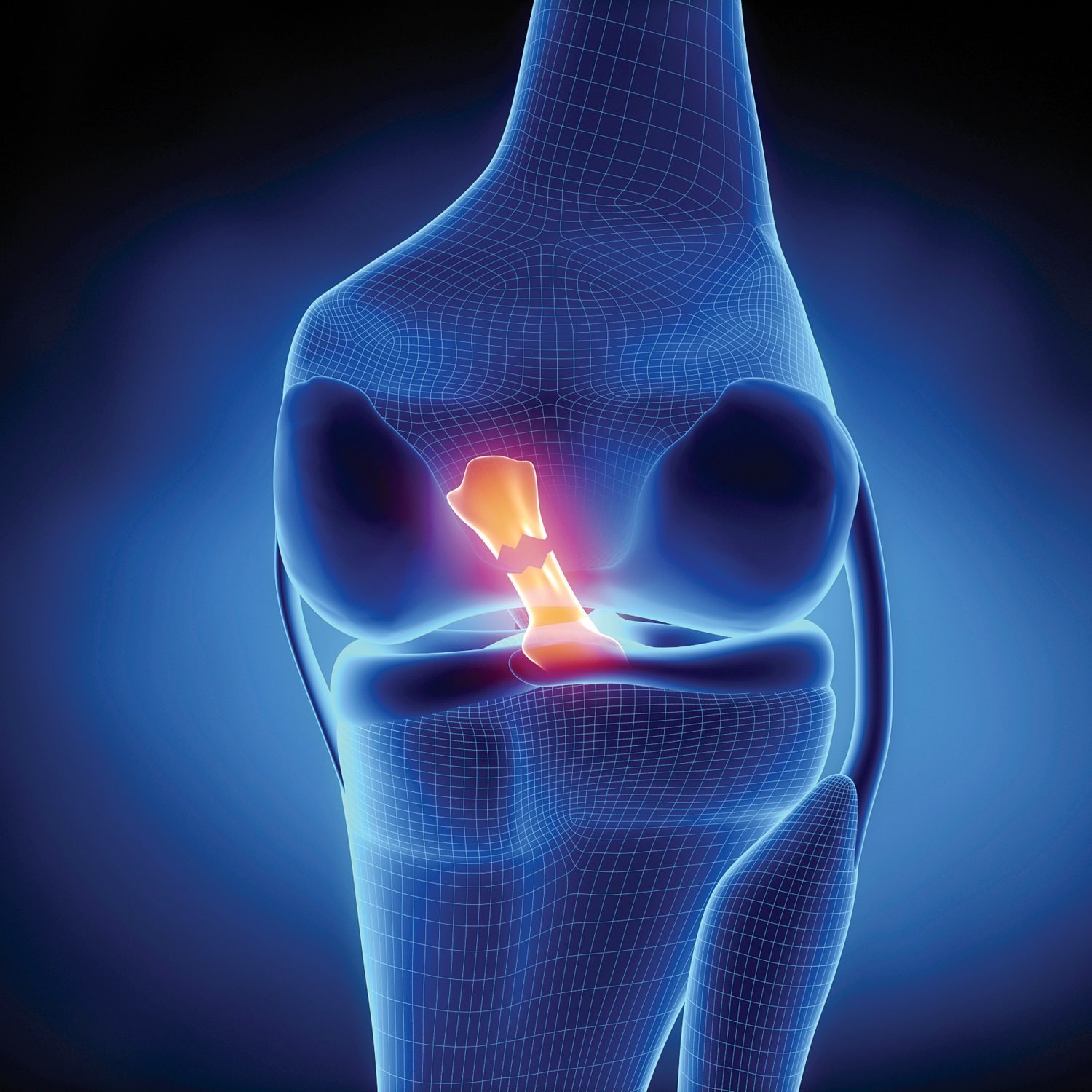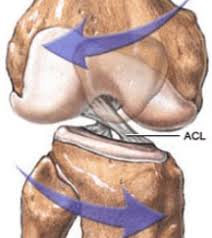Everything you need to know about ACL Injuries
Posted on July 2nd, 2018 by Andries Lodder
Basic Anatomy:
Your ACL or Anterior Cruciate Ligament is found in your knee joint.
It is one of the most important ligaments of the knee as it prevents the anterior translation or movement of the tibia against the femur. In other words, it stops your shin bone moving forward. It also assists in the general stability of the knee joint, especially during angular and rotational movements.
The ACL is assisted by other major ligaments in the knee these being:
- The Posterior Cruciate Ligament (PCL)
- The Medical Collateral Ligaments (MCL)
- The Lateral Collateral Ligaments (LCL)
Together these ligaments provide support to the knee and prevent it from dislocating.
Cause of Injury:
Injury to the ACL is usually traumatic and acute. It occurs suddenly and as a result of a a traumatic event . It can occur in sports that involve lots of stopping and starting, jumping and changes in direction. However, it can also occur during everyday activities if there is a sudden twisting of the knee with the foot planted. When the bones of the leg twist in opposite directions under body weight it will result in the tearing of the ACL.
Usually at the time of injury there is a popping sound, followed by swelling, instability and pain when weight bearing.
Severity of Injury:
ACL injuries, as well as all injuries to ligaments of the body are classified based on severity. Any ligament injury is know as a strain and they are classified into three groups:
Grade 1:
The ligament is slightly stretched but there is no tearing. There is minor pain and swelling but minimal laxity.
Grade 2:
The ligament is stretched and there is a minor tear. There is moderate pain and swelling and there may be bruising. There is noticeable laxity.
Grade 3:
The ligament has undergone a complete tear. There is severe pain, swelling and bruising and complete laxity. Surgery is usually required to reattach the ligament.
Treatment:
Depending on the severity of the tear treatment will vary. In order to determine the severity various tests can be done;
- Special tests to test the laxity of the joint
- Scans such as X-rays and MRI’s.
Grade 1 and 2
For a grade 1 and 2 tear surgery is generally not required. Physiotherapy will be helpful in the initial stages to assist in pain management and to minimize the swelling. Once the pain and swelling is under control specific rehabilitation exercises will be required to regain full function at the joint and to strengthen the muscles around the knee joint that will stabilize the joint and prevent re-injury.
Grade 3
A fully torn ACL will not heal without surgery. However, for more elderly, less active individual’s surgery is not always required. Bracing and physical therapy can be used and effective for these individuals. Specific exercises can be done to restore function and provide stability to the joint.
For individual that are very active or involved in sports surgery is recommended. Usually the ACL is not sutured back together it is rather fully reconstructed using a tissue graft. This tissue graft acts as a scaffolding around which the new ligament can grow. The graft is usually taken from either the patellar, hamstring or quadricep tendon or in certain cases a cadaver tendon can used. The surgery is usually arthroscopic, as this is less invasive and means less pain and recovery time.
Interesting facts:
- Sports such as soccer, basketball, hockey and football all have higher prevalence’s of ACL injuries then other sports.
- Interesting, women are at higher risk of ACL injuries due to their wider pelvis and greater pelvic angles which places bigger stress on the knee.
- Contact sports are only responsible for 30% of ACL injuries, while the remaining 70% come from noncontact sports.
- Up to 50% of ACL injuries also have damage to the Collateral ligaments and cartilage of the knee
- Preventative strength training can reduce ACL injuries by 50%
Rehabilitation:
Regardless of the severity of the tear and the treatment required rehabilitation is a vital part of recovering from an ACL injury.
A specific rehabilitation program will help you regain full function of the knee as well as strengthen the muscles that surround and support the knee. Not only will doing adequate rehab allow you to return to sport and activities of everyday life, it can also prevent re-injury. Ensuring correct form and technique while performing these exercises is essential to prevent re-injury and correct strengthening.
It is therefore advisable to begin your rehabilitation program with a trained health care professional. For more information about ACL injuries, or for a rehabilitation program don’t hesitate to contact us.
Tweet

